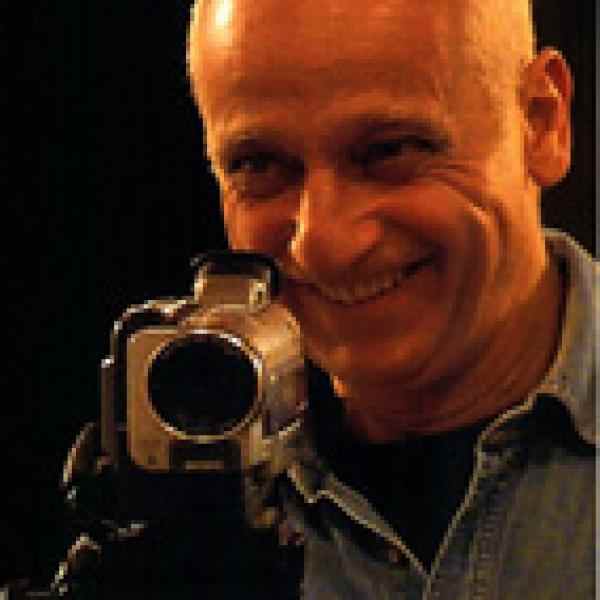Handicap Foundation / Handicap Alapítvány
https://www.nonprofitmedia.huIntroduction
Tamas Liling is giving a public voice to Hungary's citizen sector. While empowering citizen organization leaders to develop media skills and to put their work in front of the public, Tamas is also educating media professionals on how to use citizen organizations as a critical voice on public issues.
The New Idea
Tamas's idea stems from three critical insights: resources for media coverage of the citizen sector do exist; these resources are not as difficult to use or access as people think; and citizen organizations have much to gain by promoting their work both inside and outside the citizen sector.
Under Communism, technical resources for media coverage were not readily available to the public. Today, technical resources for covering the citizen sector are available. The misconception that the technical equipment and knowledge still do not exist is a fundamental problem that citizen organizations must overcome. Tamas challenges Hungary's organizations to utilize the variety of resources readily available to them.
Promotion through the media does not need to be expensive or difficult to learn. By preparing and training civil leaders on how to use even the simplest of media tools like newsletters, local television, and community radio, huge progress can be made. Tamas is involving volunteer media professionals in training citizen organizations how to use basic media tools.
Citizen organizations need to appeal to audiences within the citizen sector as much as they need to communicate outside of it. Tamas sees the media as effective tools for strengthening the cohesiveness of the civil sector. By creating more effective communication within the sector, a stronger voice will emerge.
The Problem
Citizen organization leaders in Hungary are unfamiliar working with the media to further the work of their organizations. Because of a lack of training and dramatic changes in the field of communications following the Communist era, citizen organization leaders are not prepared to deal with media. According to recent studies of the Nonprofit Education and Training Center, Hungarian citizen organizations lack the promotional knowledge they need to build long-term sustainability. With 40,000 citizen organizations in Hungary, the EU is increasing pressure on the citizen sector to communicate both horizontally and vertically to better represent the growing presence of the EU, its effect on international citizen-based cooperation efforts, and the state of the citizen sector in general.
A great majority of the 40,000 citizen organizations in Hungary deal with social problems daily. Although these organizations have critical insights into these social problems and solutions, very few journalists report on or promote citizen organizations and their work. At most, a series of short documentaries have been created, but these are kept separate from regular programming. Newspapers and television news programs do discuss local and national social issues, yet without the voice of citizen organizations, news features are missing the critical insight that the citizen sector could provide. Citizen organizations also miss the opportunity to stand as the voice for such issues.
In Hungary, the commercial media were born just a decade ago. Media professionals are not experienced with providing in-depth analysis of social issues. In the past 10 years, the space has been filled by the old, national public media that uses a communist type of representation with a focus on charity or state propaganda. Fortunately, the last five years have witnessed a host of new TV channels, both state and private. The growth makes the time ripe for Hungary to bridge the media with the citizen sector.
The Strategy
Tamas is working to professionalize the public voice of the citizen sector. He is addressing the current silence by working from both sides of the issue. On one side he empowers citizen organization leaders to work with media; on the other he challenges the media to utilize civil society leaders as a resource.
To pilot his work with the citizen sector, Tamas initially started working with the disabled. He offered a complex set of trainings to build the skills of both staff and inhabitants in institutions for the disabled. A training program included Web site design, networking with media professionals, and film and video skills. Trainees created their own documentaries, published their own newsletters, and created programs for public radio stations. Building off this success, Tamas is now preparing to launch a civic media center. The center will train citizen organizations on how to promote their own interests through the media. Trainings would be designed to help participants create their own public space, teach them how to work with the media, build a network, and work horizontally with other organizations to build a stronger voice.
Another critical aspect of Tamas's work is to prepare the media world. This is crucial to avoid the perception and presentation of citizen organizations' clients as people deserving pity. Tamas is also emphasizing the need for developing socially responsible, credible media people. He is working toward this goal both by establishing a civil independent media center and by working with the faculties of social work and media to integrate the curricula of social communications into the university curriculum. He is also mobilizing media resources in order to train civil society leaders. Tamas has also approached the National Radio and Television Association (ORTT) to design a national media policy. He convinced the ORTT to create an actual fund for programs targeting social behavioral changes. Tamas convinced the ORTT to conduct research on TV and radio programs and to reward those channels that present social problems frequently and with quality. This is necessary in order to harmonize Hungarian media to EU and international standards. Recently, Tamas started helping to develop an "Ethical Codex" for the media that will utilize standards set by the BBC.
Tamas is bringing together media and citizen organization leaders to come up with strategies for mobilizing various sectors. He is involving community radio stations, community development experts, and private media who are providing pro bono services.
In 5 to 10 years time, Tamas plans to have built a national network with a central office in the capital and subcenters in each county. The offices would aim to enhance media attention paid to the work of civil society organizations, support media's outreach to citizen organizations, organize training programs, and build a network of media professionals adept at working with the citizen sector. By generating income from producing films and preparing subtitles for foreign films, Tamas expects his organization to be self-sustainable in 10 years.
The Person
Tamas was trained as an electrical engineer and worked as a freelance journalist and director of video films in the Hungarian Film Factory. Through television and friends of his wife, Tamas was exposed to the world of the disabled. Beginning in 1992, Tamas became the founding member of several foundations for the disabled including national and international foundations addressing disabilities. He pioneered a certain type of advocacy, developing "shock media" showing the life of the disabled in institutes. But the work did not prove to be effective, nor did it bring about any dramatic social change.
Tamas then began to take institutionalized disabled people on trips to foreign countries. He documented the trips on film that were then featured on television. Through his work, Tamas realized that staff and institute residents suffered from a lack of communication. To deal with this problem, he started a newsletter that was eventually distributed directly to each person in Hungary's disabled institutions, enhancing horizontal communication among them.
Later on, the disabled citizens started running the newsletter themselves. Because the task required some journalism training, Tamas provided this specific training along with general training in all fields of the media to ensure a wider voice and publicity. Tamas also wanted to ensure work opportunities for them in the media field. The training programs later operated with disabled and nondisabled participants in one group. Eventually, Tamas incorporated radio, video, film, and the Internet into his work.
During integrated trainings, Tamas saw that the support he was offering community service organizations for the disabled would be relevant to a wider audience. This realization led Tamas to commit himself to challenging the entire citizen sector to develop a public voice.




